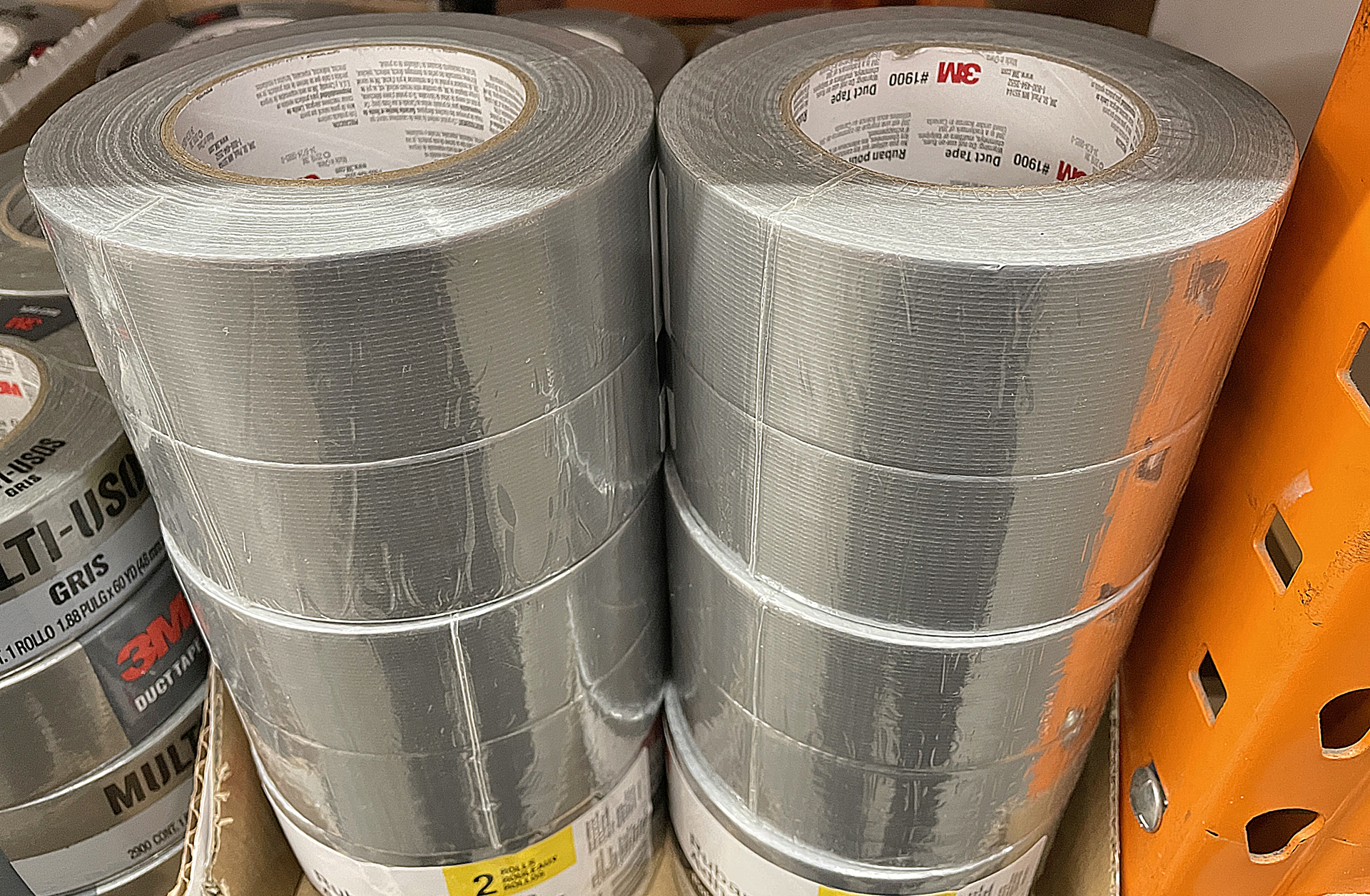Duct tape has many versatile uses — including restraining a fellow passenger who is unruly, as had happened greater than two years ago — and it could even be used in various applications in relation to commercial travel, such as in the following ways as mentioned by members of FlyerTalk:
That is Not Duct Tape on the Airplane — Or Is It?
- Fix cracks in the interior cabin of an airplane
- Force overhead bins to remain shut
- Keep a wing of the aircraft airworthy — or a wing on another aircraft
- Repair the windscreen on a jet airplane
- Help cover an aircraft engine
- Hold the paneling together along the side of the cabin
- Secure oxygen masks in their compartments
- Adhere metal flashing with the aisle carpet in the business class cabin
- Anchor down a broken tray on the back of a seat
- Temporarily fixing leaks on an aircraft
- Prevent seams and gaps from becoming larger in new airport terminals
…and even to hold a bumper to a rental car.
However, a reader of The Gate correctly pointed out that for application number three in the list above; speed tape was what was used for keeping the wing of an aircraft worthy — as well as for most other external uses on the fuselage.
“We never use, and don’t even stock, duct tape,” explains a veteran airline mechanic in this article written by Patrick Smith of Ask The Pilot. “Some of the tapes we use cost hundreds, even thousands, of dollars per roll. Speed tape is one of those. Last I heard, it costs about $700 per four-inch wide roll. It’s approved by the manufacturer, FAA and company engineering department for certain repairs — always temporary.”
According to this article at wisegeek.com, “Speed tape is an adhesive tape developed for the aviation industry, allowing people to make minor repairs to aircraft with this product to hold components of a plane until more extensive and permanent repairs can be performed.” The components are usually either superficial or not critical to the operation of the aircraft. “This product is an aluminumized tape. It is designed to be able to endure a range of temperatures, expanding and contracting along with the components it is attached to. When aircraft are flying high and conditions are very cold, the tape will shrink and hold its position. In warmer climes, like airports in the tropics, the tape will expand without dislodging.” It can even resist ultraviolet radiation, harsh weather conditions, and the use of solvents.
Final Boarding Call
Although speed tape may be similar in appearance to ordinary duct tape, they are significantly different in terms of their purposes.
As for the tape sealing cracks or holding the paneling together inside of an airplane, that may more likely be common duct tape…
…and as for the tape restraining that drunk or irate fellow passenger…
Photograph ©2021 by Brian Cohen.

